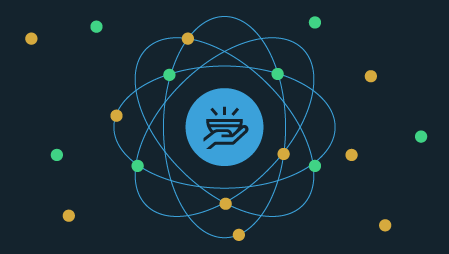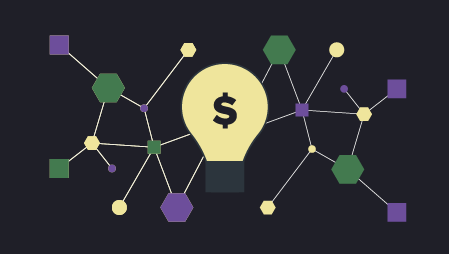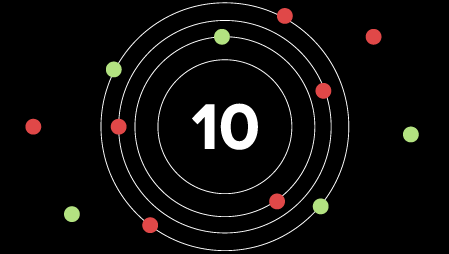You’ve probably come across the Internet of Things (IoT), but have you come across the Internet of Everything (IoE)? And, perhaps you’re wondering what is the difference between them? In many ways, there is no difference. Perhaps the biggest difference is the way they are visualized conceptually. But let’s start with some definitions.
Wikipedia tells us that the Internet of Things is a system of interrelated computing devices, mechanical and digital machines, objects, animals or people that are provided with unique identifiers (UIDs) and the ability to transfer data over a network without requiring human-to-human or human-to-computer interaction. It really started with smart plugs and devices like that and has grown.
One way of looking at the difference is to say that the IoT includes any type of physical or virtual object or entity that can be made addressable and given the ability to transmit data without human-to-machine input. The Internet of Everything, however, also includes user-generated communications and interactions associated with the global entirety of networked devices.
The concept of the Internet of Everything originated at Cisco, who defines IoE as “the intelligent connection of people, process, data, and things”. Because in the Internet of Things, all communications are between machines, IoT and M2M (machine-to-machine) are sometimes considered synonymous. The more expansive IoE concept includes, besides M2M communications, machine-to-people (M2P), and technology-assisted people-to-people (P2P) interactions. The Internet of Everything was listed as one of the top trends of 2015 by Gartner.
Basically, the IoE is the intelligent connection of people, process, data, and things. The IoE describes a world where billions of objects have sensors to detect, measure, and assess their status; all connected over public or private networks using standard and proprietary protocols.
As briefly mentioned above, the IoE, in this model, has four pillars. They are:
- People – connecting people in more relevant, valuable ways. Today, most people connect socially through their Web-enabled devices. As the IoE evolves, people will connect in new and valuable ways. Wearable devices and clothing are already changing how people connect.
- Data – converting data into intelligence to make better decisions. Data is the information generated by people and things. This data, when combined with analytics, delivers actionable information to people and machines. Better decisions are made and better results are achieved.
- Process – delivering the right information to the right person (or machine) at the right time. Processes occur between all the other pillars in the IoE. With the correct processes, connections become more valuable. These connections provide the right information, delivered to the right person, at the right time, and in the most relevant way.
- Things – physical devices and objects connected to the Internet and each other for intelligent decision making (the Internet of Things). These devices are sensing and collecting more data, becoming context-aware, and providing more experiential information to aid both people and machines.
Cisco suggests that the Internet of Everything brings together people, process, data, and things to make networked connections more relevant and valuable than ever before – turning information into actions that create new capabilities, richer experiences, and unprecedented economic opportunity for businesses, individuals, and countries. Back in 2013, Cisco was saying that with the Internet of Every-thing there is $14.4 trillion in “Value at Stake”.
For the IoE to function, all the devices that are part of the intended IoE solution must be connected together so that they can communicate. There are two ways to connect devices: wired or wirelessly. In most cases, connecting devices together using cables is too costly or cumbersome to be practical. For this reason, most devices will need to send and receive data wirelessly. There are many different types of wireless communication. The most common types are Wi-Fi, Cellular or Mobile, Bluetooth, and Near Field Communication (NFC). Some devices, such as smartphones and tablets use a combination of wireless communication methods to connect to different devices.
Another term that often comes up is fog computing – you can picture it as very thick cloud computing. It is an architecture that uses edge devices to carry out a substantial amount of computation, storage, and communication locally, which can be routed over the Internet backbone. Fog computing is also referred to as fog networking or fogging.
Connecting the unconnected requires a convergence between an organization’s Operational Technology (OT) and the Information Technology (IT) systems those organizations have in place. OT is defined as an organization’s industrial control and automation infrastructure. This includes the hardware (such as sensors and end devices) and the software that is used to control and monitor the manufacturing equipment and processes. Most communication in OT is accomplished between machines. IT systems refer to the network infrastructure, telecommunications, and software applications that are used to process information and allow the exchange of that information between humans.
By converging IT and OT systems in an IoE solution, organizations can create better products, achieve cost and risk reductions, and improve performance, flexibility, and efficiency. With IoE solutions, organizations can implement a simple, smart, and secure approach that allows organizations to:
- Simplify the infrastructure (simple) – seamlessly converge IT and OT infrastructure to reduce operational costs and increase process efficiencies.
- Create intelligence and agility (smart) – use application-centric analytics so applications can run at peak performance and gain information from the infrastructure for new services.
- Deliver end-to-end security (secure) – the converged infrastructure defends against attacks and responds to threats intelligently and dynamically.
To implement IoE solutions, organizations must examine and account for three distinct connection types: M2M (machine-to-machine), M2P (machine-to-people), and P2P (people-to-people).
Building an IoE solution is a combination of programming skills and implementing a secure solution. Having a smart city totally connected is worthless if cybercriminals can access information and take control of various city-wide activities, eg refuse collection. That makes cybersecurity vitally important for all interconnected computer systems. A good IoE system should be designed with security in mind. The increased number of connected devices and the amount of data they generate increases the demand for security of that data. With IoE, cybersecurity is moving away from the traditional centralized view to a decentralized approach whereby security happens as close as possible to the endpoint. Security and privacy-by-design need to happen everywhere with the endpoint being key. This is the way that blockchain, for example, works.
Cisco originated the term Internet of Everything and you can imagine their marketing team seeing this as a vehicle for selling more product. Having said that, the paradigm shift to IoE from the straightforward M2M way of working of an IoT system does offer advantages in terms of what’s added to the system by people being part of the system.




